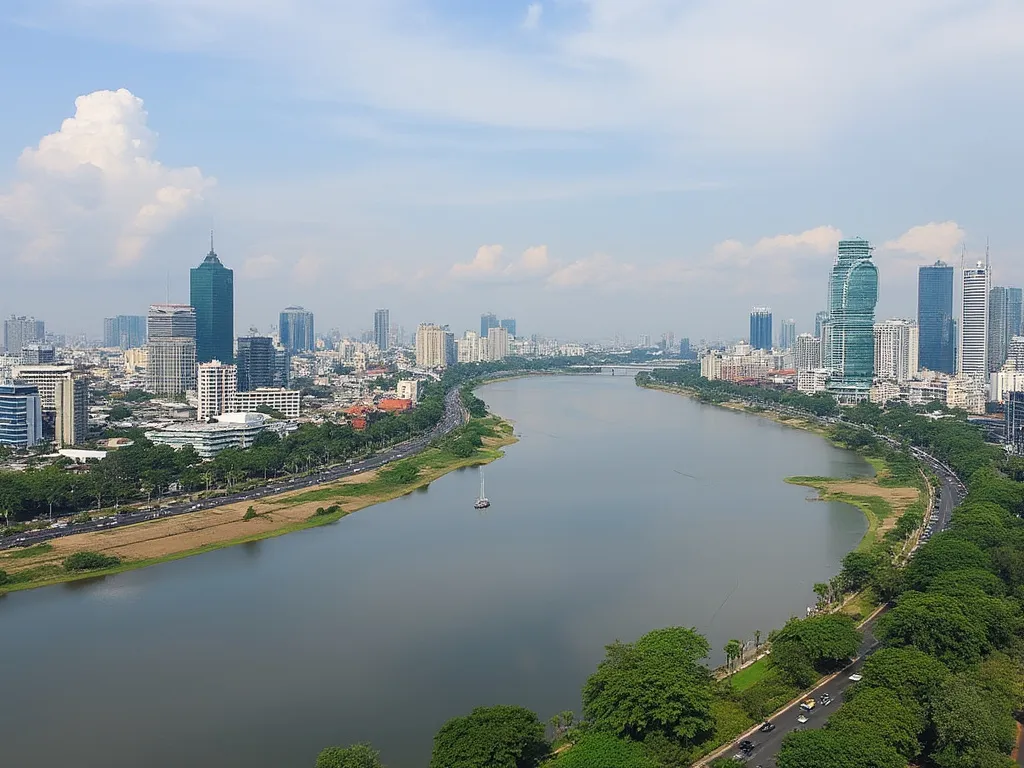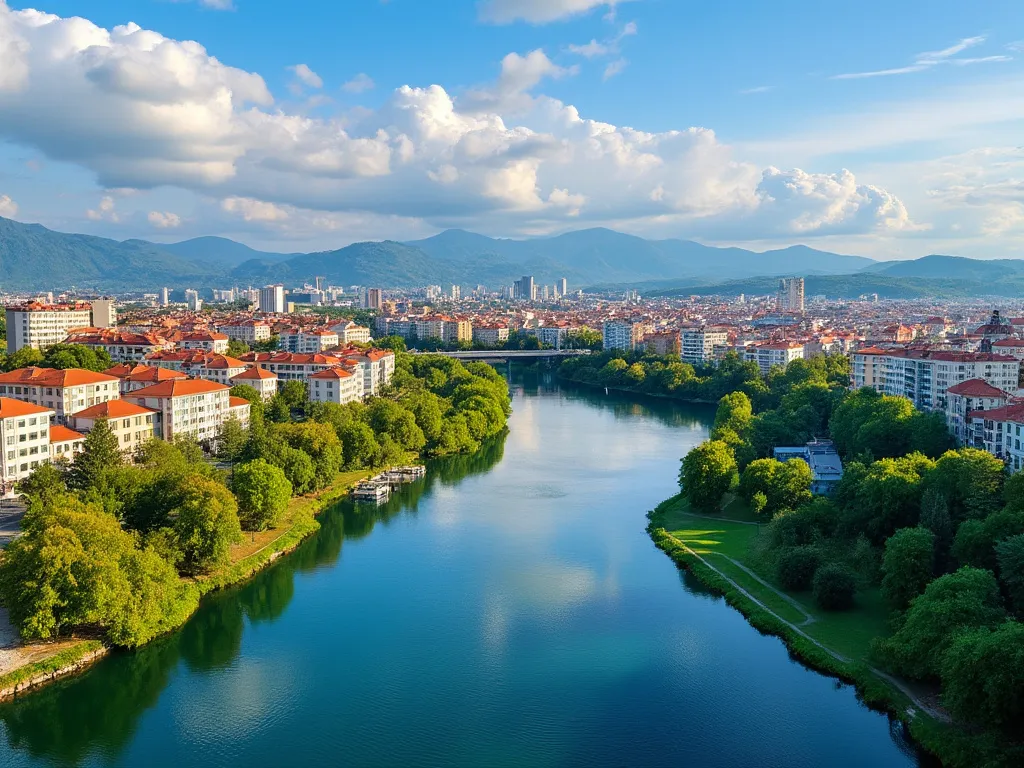
Phnom Penh, la capital y ciudad más grande de Camboya, es una bulliciosa metrópolis situada en la confluencia de los ríos Tonle Sap, Mekong y Bassac. La ciudad, conocida como la "Perla de Oriente", tiene una rica historia que se remonta al siglo XV y alberga una mezcla de estilos arquitectónicos jemeres, franceses e indios.
Información sobre Phnom Penh
| País | 🇰🇭 Camboya |
| Población | 2.1 millones |
| Coordenadas | 11.5625° N, 104.9167° E |
| Área | 570 km² |
| Clima | Clima de sabana tropical |
| Idioma | Jemer |
| Moneda | Riel camboyano (KHR) |
| Zona horaria | UTC+7 |
| Proximidad a otras ciudades importantes | Ciudad Ho Chi Minh (210 km), Bangkok (570 km), Hanói (1,430 km) |
Datos interesantes sobre Phnom Penh
- Phnom Penh alberga el templo budista más grande del mundo, el Wat Phnom.
- El nombre de la ciudad, Phnom Penh, se traduce como "colina de Penh" en jemer.
- Phnom Penh es conocida por su vibrante escena de comida callejera, con platos populares como el amok de pescado y el nom banh chok.
- La ciudad celebra anualmente el Festival del Agua, que atrae a millones de visitantes cada año.
Atracciones turísticas en Phnom Penh
- Palacio Real: Un gran complejo palaciego que sirve como residencia oficial del Rey de Camboya.
- Pagoda de Plata: Un impresionante complejo de templos dentro de los terrenos del Palacio Real, conocido por sus intrincadas tallas y su suelo de baldosas de plata.
- Museo Nacional de Camboya: Un museo que muestra la rica historia y el patrimonio cultural del país.
- Mercado Central: Un bullicioso mercado que ofrece una amplia gama de productos, desde productos frescos hasta souvenirs.
Antecedentes históricos de Phnom Penh
Fundada en 1372, Phnom Penh fue inicialmente conocida como Chaktomuk, que se traduce como "cuatro caras" en jemer. La ciudad se convirtió en la capital del Imperio Jemer en 1432 y permaneció así hasta el siglo XVI. En 1863, Phnom Penh se convirtió en la capital del protectorado francés de Camboya y experimentó una significativa modernización y urbanización. La ciudad obtuvo la independencia de Francia en 1953 y se convirtió en un importante centro cultural y económico en el sudeste asiático.
Ubicación geográfica de Phnom Penh
Phnom Penh está situada en la parte sur-central de Camboya, aproximadamente a 210 km al noroeste de Ciudad Ho Chi Minh, Vietnam. La ciudad se encuentra en una ligera elevación, con los ríos Tonle Sap y Mekong fluyendo a través de ella. El paisaje circundante está dominado por el lago Tonle Sap, el lago de agua dulce más grande del sudeste asiático.
Significado cultural de Phnom Penh
Phnom Penh es una ciudad impregnada de historia y cultura. La ciudad alberga numerosos templos, museos y monumentos históricos, incluyendo el Palacio Real, la Pagoda de Plata y el Museo Nacional de Camboya. Los vibrantes mercados de la ciudad, como el Mercado Central y el Mercado Ruso, ofrecen una visión de la vida cotidiana de los locales.
Importancia económica de Phnom Penh
Phnom Penh es el centro económico de Camboya, representando una parte significativa del PIB del país. La ciudad es un importante centro de comercio, finanzas e industria, con un sector turístico en crecimiento. La ubicación estratégica de la ciudad en la confluencia de los ríos Tonle Sap, Mekong y Bassac la convierte en un importante centro de transporte.
Conclusión sobre Phnom Penh
En conclusión, Phnom Penh es una ciudad que combina a la perfección la tradición y la modernidad, ofreciendo una experiencia cultural e histórica única para los visitantes. Desde sus impresionantes templos y vibrantes mercados hasta su rica historia e importancia económica, Phnom Penh es una ciudad que tiene algo que ofrecer para todos.
 Plymouth
Plymouth
 Podgorica
Podgorica
 París
París
 Philipsburg
Philipsburg